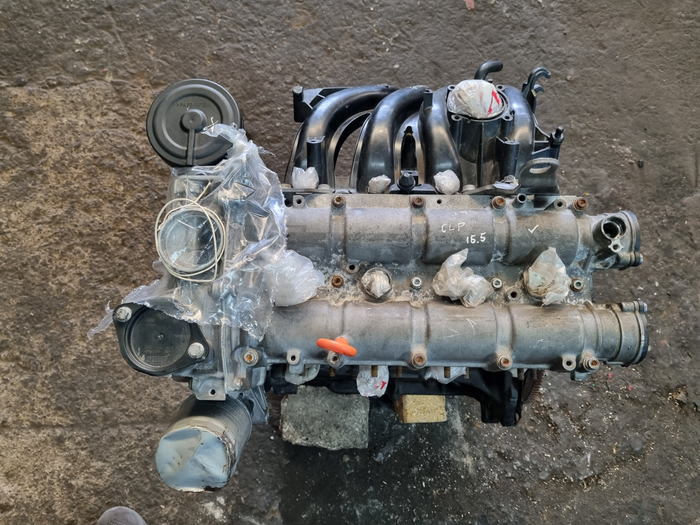Just How a Clp Engine Can Improve Performance in Numerous Industries
The arrival of CLP engines notes a significant shift in operational effectiveness throughout various fields, driven by their capability to maximize gas usage and minimize downtime. As organizations significantly focus on sustainability together with efficiency, the function of CLP engines ends up being even a lot more vital.
Overview of CLP Engines
CLP engines, or Continual Liquid Propellant engines, represent a substantial innovation in propulsion modern technology, particularly for area applications. These engines use a continuous feed system that enables the continual expulsion of propellant, causing boosted performance and efficiency contrasted to typical strong or hybrid propulsion systems. By keeping a constant flow of fluid propellant, CLP engines can attain more exact drive control, which is crucial for navigating spacecraft in different mission scenarios.
The layout of CLP engines integrates advanced products and cutting-edge gas monitoring systems. clp engine. This leads to decreased weight and enhanced integrity, essential elements for long-duration area goals. The continuous procedure lessens the risk of burning instability, a common challenge in traditional rocket engines.

Benefits in Production
The production of Constant Liquid Propellant (CLP) engines presents a number of remarkable advantages that enhance both efficiency and cost-effectiveness. One of the key benefits is the structured manufacturing procedure, which decreases the complexity linked with standard propulsion systems. By making use of liquid propellant, makers can attain higher accuracy in engine performance, causing enhanced power output and minimized waste.
Additionally, CLP engines help with a higher degree of modularity, permitting simpler assimilation into various production lines. This adaptability can substantially reduce preparations and enhance total operational flexibility. Making use of CLP technology additionally often tends to reduce the need for substantial upkeep due to less moving components, which equates right into reduced downtime and functional prices.

Applications in Logistics
Leveraging Continual Fluid Propellant (CLP) engines in logistics uses considerable benefits in functional effectiveness and integrity. These engines give a robust service for numerous transport needs, making it possible for the seamless motion of products across huge distances. The fundamental layout of CLP engines enables for regular power result, which converts right into smoother and more predictable transportation schedules.
One of the key applications of CLP engines in logistics remains in sturdy products transport, where they can drive both ground and aerial automobiles. Their capability to preserve high performance under differing tons problems makes sure that shipment timelines are met, thereby improving customer fulfillment. In addition, CLP engines can be integrated into automated logistics systems, facilitating real-time monitoring and optimizing route planning.
In addition, the resilience of CLP engines minimizes upkeep downtime, permitting logistics companies to optimize their click to read functional capabilities. This is particularly useful in warehousing operations, where effectiveness in managing and carrying products is important. As logistics remains to evolve, the assimilation of CLP engines stands for a forward-thinking strategy that not just boosts performance however also sustains the market's expanding needs for integrity and speed.
Effect On Energy Performance
How do Constant Liquid Propellant (CLP) engines improve energy efficiency in transportation? CLP engines make use of a constant circulation of fluid gas, enhancing combustion processes and keeping a secure drive output. This design decreases energy losses connected with conventional combustion engines, where gas shipment can vary and cause inefficiencies.
The continual procedure of CLP engines permits an extra effective thermal cycle, leading to higher details impulse contrasted to traditional engines. clp engine. This equates to lowered gas consumption for the exact same amount of job done, substantially lowering functional prices throughout various transport markets, including air travel and maritime markets
In addition, the capability of CLP engines to maintain ideal efficiency under differing lots problems lowers the requirement for frequent velocity and deceleration, even more enhancing fuel efficiency. Boosted power effectiveness not only adds to cost you could try here financial savings however also brings about lower greenhouse gas emissions, aligning with global sustainability objectives.
Future Trends and Innovations
Emerging improvements in Constant Liquid Propellant (CLP) engine innovation promise to transform the landscape of transportation efficiency and sustainability. As markets pivot toward greener options, CLP engines stand at the leading edge, incorporating ingenious products and design methods that boost efficiency while lessening ecological influence.
Among one of the most appealing patterns is the fostering of hybrid systems that incorporate CLP engines with renewable resource resources. This harmony can maximize gas consumption and minimize exhausts, aligning with international sustainability objectives. Additionally, developments in computational fluid dynamics (CFD) are helping with the layout of more aerodynamically efficient engines, bring about reduced drag and enhanced gas performance.
In addition, the advancement of clever surveillance systems is readied to improve functional performances. These systems utilize data analytics and IoT innovation to enhance engine efficiency in real-time, making certain that the engines run within their most reliable specifications.
As study continues to discover alternative propellant solutions-- such as biofuels and artificial gas-- the future of CLP engines looks promising. By using these technologies, sectors more helpful hints can not only boost their effectiveness however likewise contribute dramatically to a cleaner, a lot more sustainable future in transport.
Conclusion
In final thought, CLP engines stand for a significant development in efficiency throughout numerous sectors. The combination of sophisticated materials and less moving components lessens upkeep requirements, while positioning with sustainability objectives positions CLP engines as a critical technology for the future.